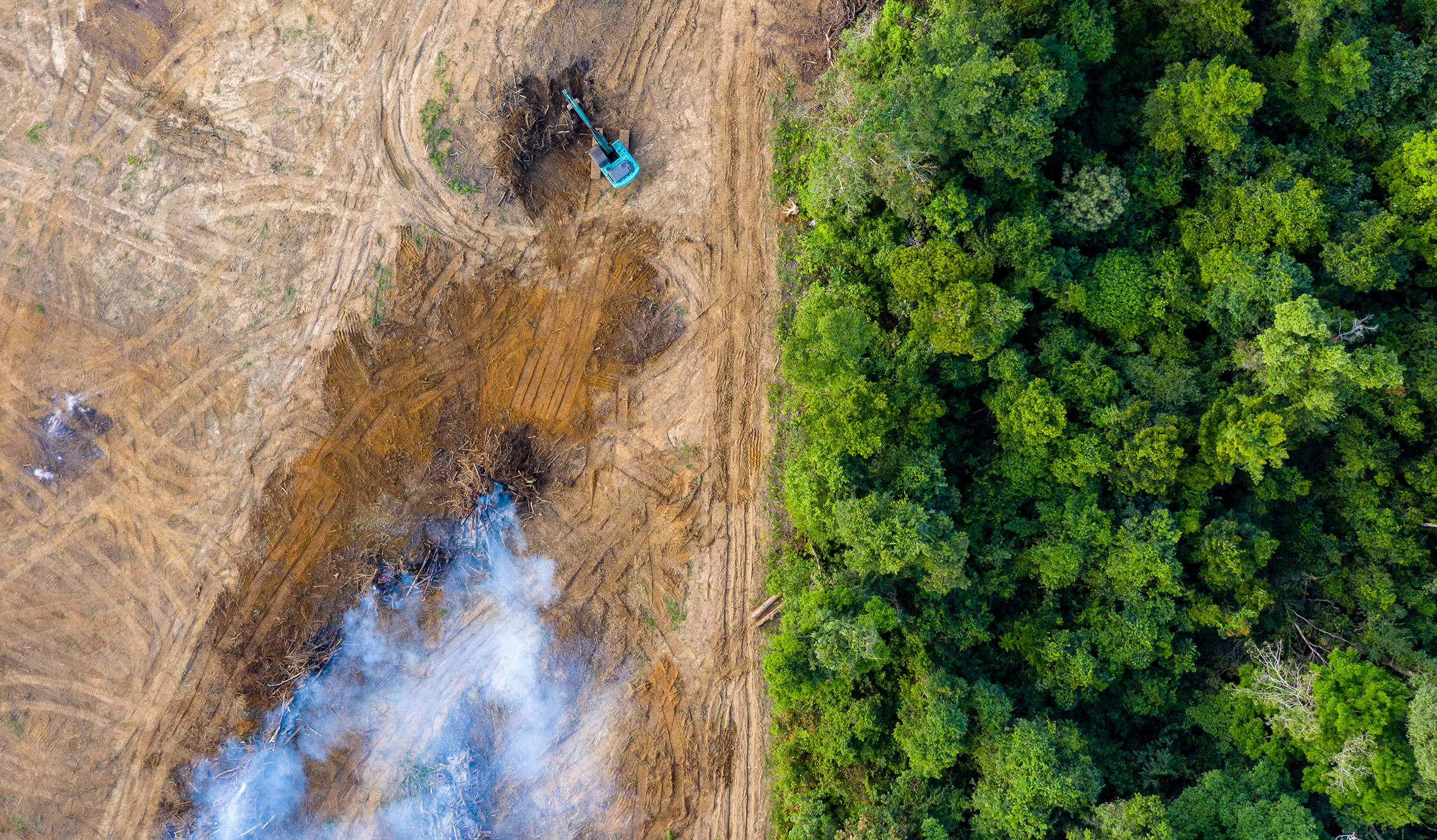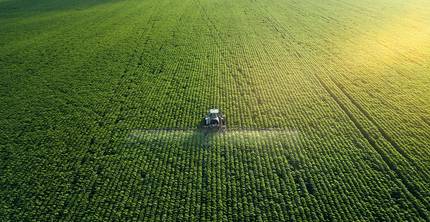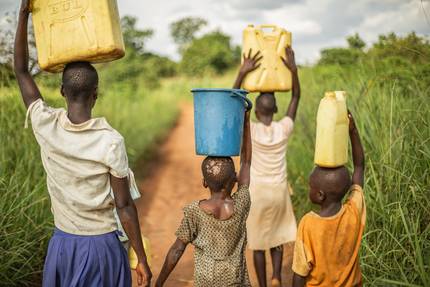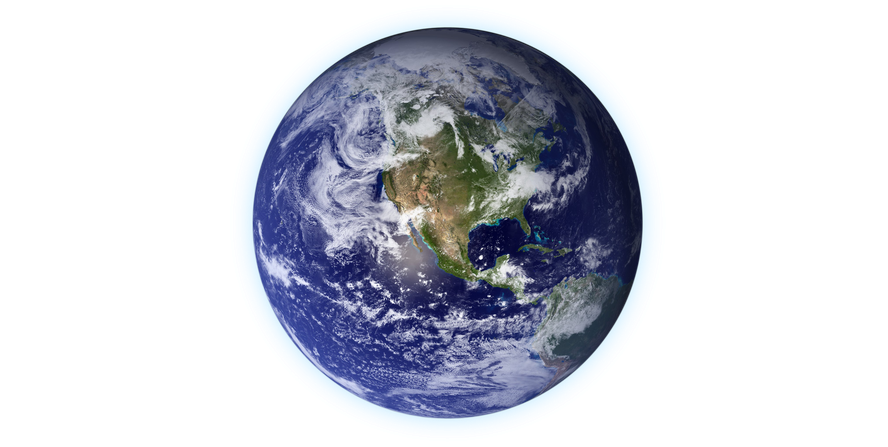Beyond safety limits
2023/12/01 Etxebeste Aduriz, Egoitz - Elhuyar Zientzia Iturria: Elhuyar aldizkaria
Humanity needs a healthy planet, adequate environmental conditions. However, evidence shows that maintaining these conditions will become increasingly difficult. We are exceeding all safety limits. Two researchers who have investigated these limitations, Noelia Zafra Calvo and David Nogués Bravo, have told us what the situation is.

A large group of international scientists concluded that “the planet is far from a safe place for humanity” in a comprehensive study published in Science magazine last September. In fact, the results of this study showed that six of the nine limits known as “planetary boundary” have already been overcome and another two are on the way to overcoming. “There is a great risk that the system will not continue to function as it has been so far and that we will not be able to provide the necessary services,” explains Noelia Zafra Calvo, a researcher at BC3.

These nine limits were defined by researchers at the Stockholm Resilience Centre in 2009. “What we manage with planetary boundaries is to understand the conditions in which societies have developed throughout the Holocene and to measure how far we have moved away from them,” explains macro-ecologist David Nogués Bravo. He is a professor at the University of Copenhagen and has participated in this latest study. “Overcoming borders means moving far away from these conditions. It is a way to conceptualize and quantify what is a safe space for societies.”
In fact, although our species is about 300,000 years old, all modern civilizations have developed in the last 10,000 years, starting from the last glacier. And it is very likely that environmental conditions during this period will be one of the main reasons for this. From this hypothesis, nine planetary boundaries were established in 2009, selecting nine key processes or systems to maintain these environmental conditions: biosphere integrity, climate change, land use, freshwater, phosphorus and nitrogen cycles, environmental pollutants, ocean acidification, atmospheric aerosols and stratospheric ozone.
“The greatest strength of planetary boundaries is that it combines concepts and data from different disciplines, there is no other methodology that manages it,” says Nogués. “Often climatologists work separately, those who work on biodiversity equally, those who study nitrogen cycles… Putting all these variables in one frame is not easy, and over the last 15-20 years much work has been done on it, with planetary boundaries.”
When the nine limits were established in 2009, four overruns were found: climate change, biosphere integrity, soil use and phosphorus and nitrogen cycles. To measure the rest, they did not have sufficient information. Another study concluded last year that the limit of environmental pollutants was also exceeded.
The situation of nine borders has now been analysed, based on over 2,000 studies. And these results show that, in addition to the five above, one sixth has also been exceeded, that of freshwater. In addition, researchers warn that a seventh, the acidification of the oceans, is about to be overcome, and that the accumulation of atmospheric aerosols, although globally within safe limits, is well above that limit in many places.
“It’s not easy to set specific limits, or get all the information to measure the situation on a global scale, so we’ve taken 8-9 years,” Nogués explains.
Unknown risks
These limits should be understood as risk thresholds.” It uses blood pressure as a metaphor: “When you have a blood pressure above 13 it doesn’t mean you have a heart, but you are at risk. Well, that’s what those limits tell us, that we are at risk.”
Life-sustaining systems have been so damaged by man that we now don’t know what can happen,” says Zafra, “we don’t know how those systems will react and can continue to offer what we need to live.”
Predicting the future is always difficult, but it's useful to look at the past. This is what Nogués does, who has done a lot of research into the environmental changes of the past. “There have been major changes in the past that have influenced the loss of species and the decline of some civilizations. Well, the current changes are so big and they're happening so fast that we think the impacts can be bigger than ever before. In biodiversity, for example, we are witnessing a sixth mass destruction. We are not yet at this point, but the data says we are approaching a vacuum.”

In fact, biodiversity and climate are at the centre of these nine closely linked borders. In the case of climate change, CO2 concentration is one of the parameters considered. The limit is 350 ppm and currently around 420. Researchers estimate that approaching 450 will lead to an increase in global temperature of almost 2 °C. Before the industrial revolution, the CO2 concentration was 280 ppm.
On the other hand, destruction and degradation of ecosystems, loss of species, etc. have led the biosphere to a depressed state, a limit that has also been largely overcome. And we're not talking about saving the lynx or the polar bear; the loss of biodiversity directly affects humans.
Biodiversity as a basis for everything
With the weather we start to see things getting worse every day, but with biodiversity it’s much harder to become aware of what affects us,” says Zafra. “But we live in a system where we need many other living things, to have clean water, to have breathable air, to produce food… And on another level, languages, cultures and societies have been born in interaction with nature. That is, biodiversity is the basis of everything.”
The loss of biodiversity directly affects our health.” “When ecosystems do not work well, more diseases appear. From the point of view of Single Health, we began to understand how the relationships between nature and societies and the health of ecosystems affect people’s health.”
We must be aware of the real impact of these changes,” Nogués stressed. “Beyond the risk of loss of the polar bear, or food security problems, they have a direct impact on human health and the possibilities of maintaining stable societies.”
So researchers have shown that we are taking excessive risks. “We risk moving the biosphere to an irreversible zombie area,” says Nogués. “When the biosphere loses some of its diversity, it stops working. And when this happens it is very difficult to turn it around.”

“Biodiversity is the result of billions of years of evolution. So life has millions of ways, and they all have their role in the ecosystem. If these living things and functions are lost, human beings will not be able to recover what has cost nature so many years.” Zafra also believes this: “When biodiversity is lost it is impossible to fully recover it.”
“But we can try to recover it to the fullest,” he adds. “Right now we may not need the Earth to be like 10,000 years ago, but we do need to restore the functions that sustain life.”
The study also shows a positive trend, with the only one that the stratospheric ozone limit is in good condition, improving since the ban on chlorofluorocarbons. “The case of ozone demonstrates that when there is an objective and things are done well, positive impacts can be achieved,” says Nogués.
“This case is special,” Zafra says, because it was easy to replace and no one had any interest against it. That’s not the case with biodiversity and climate.”
What we take and what we leave
If we look at the nine boundaries, three have to do with what we get out of the planet, and the other six are directly related to what we leave, waste. In short, there is the key to everything. “A very important part of the problem is that we live in an absolutely mind-bending and productivist system that goes against life,” says Zafra.
“Sapiens has always been a stractivist,” says Nogués, “the problem is that in the last century and a half, with industrial and technological revolutions, our ability to extract resources from the biosphere has increased exponentially, and that has brought us to this situation.”
Zafra makes it clear: “At the planetary level, the system is based on the overexploitation of the planet. At the individual level, the important thing is to produce. You can do without other things: family, relationships, relationship with nature, or even yourself. One day you can get up with back pain, but more important than analyzing and taking care of what happens to you is taking a pill and continuing to produce. Finally, on a social level, what is at the base of the system is that there are people who live very well because others live very badly.”
Stimulant for all
In fact, taking into account social and justice, last May some 50 scientists published in Nature a review of planetary boundaries. Zafra himself is one of them. “It is absolutely fundamental, when we say that the Earth must be habitable for human beings it must be for everyone. And the truth is that problems related to planetary borders influence differently in different places around the world, different social groups or different people.”
If you consider this, planetary boundaries are even narrower. For example, the case of climate change is very clear. Limiting warming to 1.5°C would avoid the most severe impacts but not many other significant damage that will affect many people, such as deaths, migration, food and water availability. In fact, with an increase of 1.5 °C, 200 million people will have to live with extreme temperatures, affecting more than 500 million people. “The increase in temperature will not have the same effect in countries such as Germany or the Vanuatu Islands, which are states with very different characteristics, and their contribution to climate change and pollution probably has nothing to do with it.”
So they calculate that the safe and fair climate limit is equal to or below 1.0°C. And overcoming this border is not fair, because it is already causing significant damage to millions of people.
“Justice must also be applied to the changes that will have to be made to deal with what is coming,” Zafra adds. “Not everyone has the same responsibility or the same responsiveness. Not the same perspectives and values. And the question is who is going to give a voice in this process of change, who is going to make decisions, and what knowledge are going to take into account other conceptions of the world…”.
Nogués also values the work of Zafra and his colleagues. “This article shows very well that without social equity it will be very difficult to improve planetary conditions.”
Facing a great challenge
The challenge is not small. “We’re talking about a planet, millions of people,” Nogués warns. “Deceleration can be a solution.” Because we're talking about the borders of the planet, but we live in a system based on unlimited growth. “The wager of recent years is ‘green growth’, based on sustainable economies. But more and more voices are questioning this path. Perhaps degrowth is what we need to meet the challenge ahead.”
Whatever the solution, major changes will be needed. “Global political, economic and social commitments and alliances would be needed, as we have never seen before,” says Nogués. “Humanity has to face a situation like the one it has never known, to see if we are able to understand what is at stake and how we should face it.”
Zafra agreed: “It’s a multi-level issue. A pool game with many balls and a minimum of four players. On the one hand, we must work at scientific level to investigate these limitations, to provide data and to communicate the situation. But this is of no use if it is not then carried out in political actions, so that governments protect what keeps life, and do not destroy it. And the action of governments must be aligned with society and with social movements and with the changes that must be made in society. And it would be a fourth individual level.”
Although the situation is worrying, “it’s not about alarming people,” Zafra says. “But you have to do things on many levels and you have to do it now.”
“We don’t want to understand the planetary boundary as an apocalypse,” says Nogués. And although they consider it impossible to recover environmental conditions, “we are in time to reduce impacts and change trends,” he adds. “We have to do everything we can to change or at least not accelerate trends. Thus, we would gain time to seek more solutions.”
“If a person has stress of 16 or 17, he may never be able to do a marathon, but if he takes some pills, exercises and takes care of his diet, he may not have a heart attack and may lead a relatively normal life.”

Gai honi buruzko eduki gehiago
Elhuyarrek garatutako teknologia







